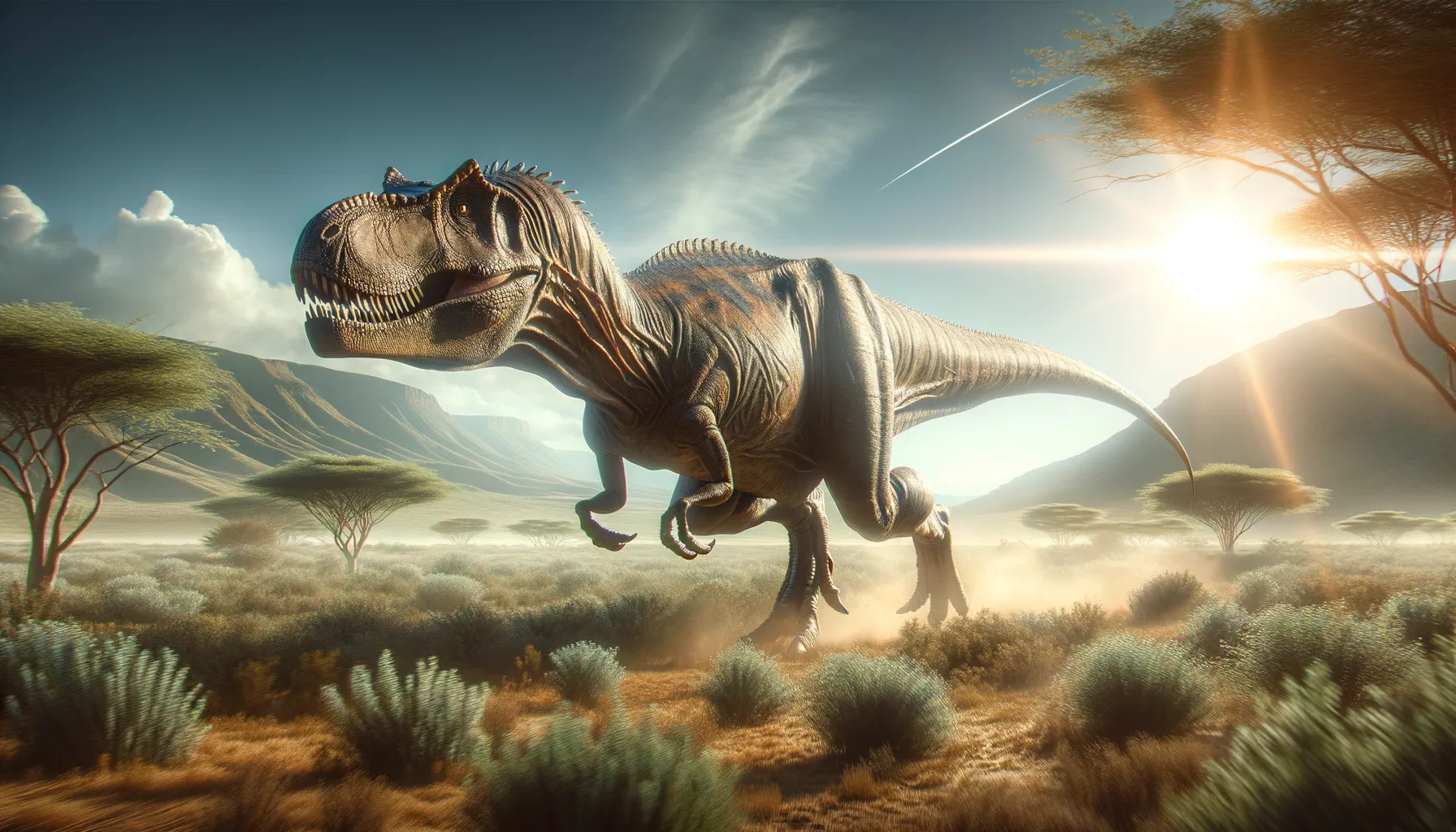
Spinostropheus
Swift hunter of the ancient world.
Period
Jurassic
Length
About 6 meters long.
Height
Roughly 1.5 meters at the hips.
Weight
Approximately 450 to 550 kg.
Spinostropheus was a predatory dinosaur that roamed the ancient landscapes of what is now Africa during the Jurassic period. Known for its moderate speed and agility, this dinosaur was built for pursuit hunting. Its fossils have provided paleontologists with essential insights into the diversity of theropod species living during its time. The Spinostropheus continues to intrigue researchers due to its unique combination of features, shaping our understanding of dinosaur evolution.
Diet
Spinostropheus likely had a carnivorous diet, preying on smaller dinosaurs and perhaps scavenging when opportunities arose. Its teeth suggest it was well-adapted for tearing flesh, indicating a primarily meat-based diet.
Hunting
This dinosaur likely relied on its speed and agility to catch prey, possibly hunting in packs or pairs to improve success rates. It would have targeted weaker or slower-moving animals, using surprise and quick bursts of speed to its advantage.
Environmental challenges
Spinostropheus faced environmental challenges such as changes in climate and competition for food with other predators. Seasonal variations could have affected prey availability, demanding adaptability in hunting strategies. Additionally, volcanic activity and other geologic events may have periodically altered its habitat, requiring it to migrate or diversify its prey base.
Speed
Moderately fast for its size.
Lifespan
Likely around 10 to 20 years.
First discovery
First discovered in the early 1960s in Niger.
Fun Facts
- Spinostropheus was a small meat-eating dinosaur that lived during the Jurassic period.
- Its name means 'spine vertebrae', which refers to the unique features of its backbone.
- Fossils of Spinostropheus have been found in the country of Niger, Africa.
- This dinosaur is believed to have been about the size of a large dog, making it a relatively small predator.
- Spinostropheus is part of the Ceratosauria group, which includes other small to medium-sized carnivorous dinosaurs.
- Its lightweight and agile body suggest it was a fast runner, possibly hunting small prey.
- Paleontologists study animals like Spinostropheus to understand more about dinosaur diversity in Africa.
Growth and Development
Spinostropheus likely followed a growth pattern typical of theropods, experiencing rapid growth during its juvenile years. As it matured, growth rates would have slowed, allowing it to develop its hunting skills fully. Fossil evidence suggests that environmental stresses might have influenced its growth and overall health.
Habitat
Spinostropheus inhabited regions with varied landscapes, including floodplains and open woodlands. These areas would have provided abundant prey and opportunities for ambush hunting. The semi-arid conditions prevalent during its time fostered a diverse ecosystem where this dinosaur could thrive.
Interaction with other species
As a mid-sized predator, Spinostropheus may have occasionally encountered larger predators, requiring it to assert dominance or retreat strategically. It likely competed with other similar-sized theropods for food, driving evolutionary adaptations. Its presence in the ecosystem would have influenced the population dynamics of its prey and coexisting species.
Natural lifespan
Spinostropheus likely lived up to approximately 20 years in the wild if conditions were favorable.
Reproduction
Spinostropheus probably laid eggs, like most theropods, with nesting behaviors adapted to its environment. It may have chosen secluded or hidden areas to lay eggs, protecting them from other predators. Parental care is uncertain, but some guarding of nests might have occurred to ensure offspring survival.
Social behaviour
Spinostropheus might have exhibited some level of social behavior, especially during hunting. Group hunting could have increased their hunting success, suggesting some temporary cooperative interactions. However, as predators, they were likely solitary or formed loose groups rather than tightly-knit social structures.
Fossil locations
The majority of Spinostropheus fossils have been found in the Tiourarén Formation in Niger, providing insight into its distribution and environment. Fossil sites reveal it shared habitats with various other dinosaurs, contributing to our understanding of the Jurassic ecosystems. Ongoing excavations continue to explore potential new finds in the surrounding regions.
